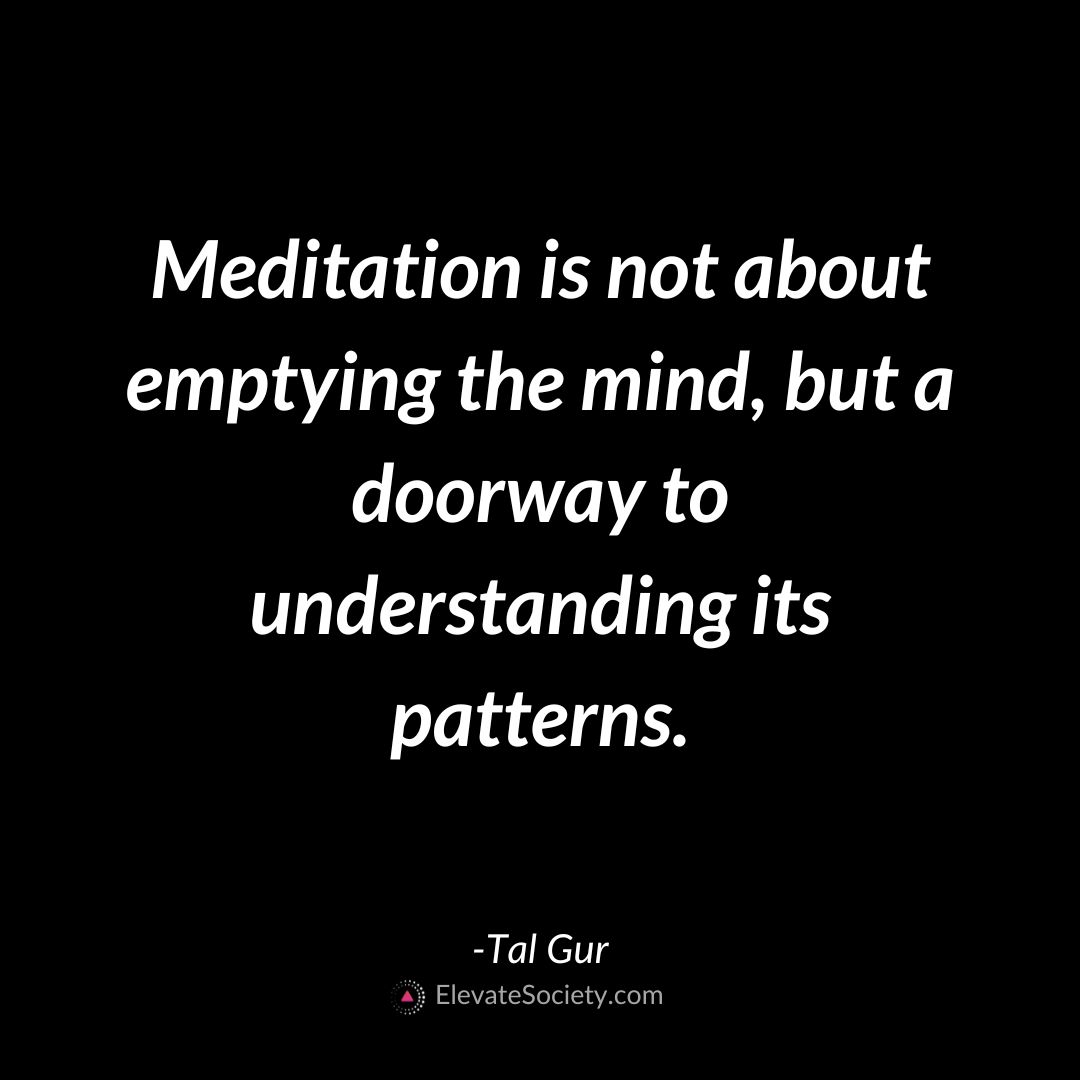Meditation is not about emptying the mind, but a doorway to understanding its patterns.
Imagine you're sitting by a gently flowing river, watching leaves float by on the water's surface. Each leaf represents a thought passing through your mind. This serene scene encapsulates the essence of meditation, not as a quest to silence those thoughts or force the river to stand still, but rather to observe the leaves—your thoughts—drift by without clinging to them.
Meditation, contrary to popular belief, isn't about creating a void in your mind. It's more akin to opening a door to a room you've never really looked into, despite it being part of your home. The room is full of various objects, each representing your thoughts, emotions, and patterns. The goal isn't to clear the room, but to understand why each object is there and how they're arranged.
Consider the act of cleaning your house. The intention isn't to empty it but to organize and understand what belongs where, making space not by discarding everything, but by recognizing what serves you and what doesn't. Similarly, meditation helps you sift through the clutter of thoughts to understand their patterns, why they arise, and how they affect you.
By doing this, you learn about the intricacies of your mind. Like a gardener who knows which plants need more sunlight and which require shade, you begin to understand which thoughts need attention and which can be let go.
For instance, imagine you're afraid of public speaking. Through meditation, you might observe thoughts related to this fear without getting swept away by them. Over time, you might recognize a pattern: the fear isn't just about speaking in front of people but rooted in a deeper fear of judgment or failure. Understanding this pattern allows you to address the root cause, not just the symptoms.
Meditation is a journey of self-discovery, a tool for uncovering the layers of your mind. It's about sitting with your thoughts, not as an adversary but as an observer, learning from them to cultivate a deeper understanding of yourself.
As you continue on this path, you'll find that meditation is less about achieving a state of emptiness and more about embracing the fullness of your inner landscape. It's about understanding the ebb and flow of your thoughts, emotions, and patterns, just like watching the river flow, acknowledging its presence without the need to change its course.
So, here's a question to ponder: What patterns in your thoughts and emotions have you observed, and how can understanding these patterns better guide your actions and reactions in daily life?
Chief Editor
 Tal Gur is an author, founder, and impact-driven entrepreneur at heart. After trading his daily grind for a life of his own daring design, he spent a decade pursuing 100 major life goals around the globe. His journey and most recent book, The Art of Fully Living, has led him to found Elevate Society.
Tal Gur is an author, founder, and impact-driven entrepreneur at heart. After trading his daily grind for a life of his own daring design, he spent a decade pursuing 100 major life goals around the globe. His journey and most recent book, The Art of Fully Living, has led him to found Elevate Society.




















